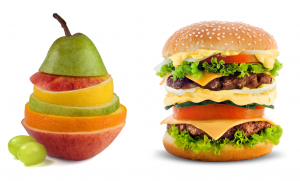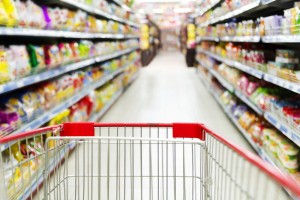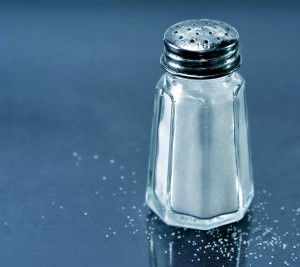Europe is getting fatter. One in two adults and one in three children are either obese or overweight. Having kilos to spare is one of the major risk factors for developing ‘lifestyle diseases’ such as heart disease, type II diabetes and cancer. And an unhealthy diet is a sure way to get fat. Indeed, it has become the number one risk factor causing ill health and early death. So what’s causing this?
Photos of yummy, healthy food have become the latest craze on social media. But what about our kitchens? Just check yours. I bet it looks a lot like this one [1]. Processed foods have invaded our kitchens because they make our lives easier. But convenient does not mean healthy. It is no secret the more processed a food is, the less nutritious it becomes.
How do we make healthy food trendy? Solutions include stricter reformulation, smarter promotion, and clearer information. Let me go through them briefly.
Healthy can rhyme with tasty
 Did you know that some healthy-looking muesli are actually almost 50% sugar? And why is that? Well, the industry is given a free rein to add any level of sugar. In recent years most food giants have committed to slashing sugar and salt levels in their products.
Did you know that some healthy-looking muesli are actually almost 50% sugar? And why is that? Well, the industry is given a free rein to add any level of sugar. In recent years most food giants have committed to slashing sugar and salt levels in their products.
Despite progress, some of our members still find sky-high amounts in everyday food. But good news is our taste buds can adapt over time. If food makers gradually used less salt and created pizzas with more aubergines and courgettes, our risk of developing heart disease would wane [2].
It’s time the healthy choice becomes the fun choice
 Unhealthy processed food should become the exception rather than the rule. Last time you were at the train station and craved something to eat, was there any healthy option on offer in the vending machine? Or just chocolate snacks, triangle sandwiches and sodas? The situation is no better in supermarkets. Check-outs – where we spend most of our shopping time – swarm with sugary snacks. The same goes for the digital world which exposes children to bucket loads of ads which risk creating a generation of fast food addicts. Supermarkets should remove junk food from check-outs while Europe-wide legislation is needed to shield our little ones from marketing praising low-nutritious food.
Unhealthy processed food should become the exception rather than the rule. Last time you were at the train station and craved something to eat, was there any healthy option on offer in the vending machine? Or just chocolate snacks, triangle sandwiches and sodas? The situation is no better in supermarkets. Check-outs – where we spend most of our shopping time – swarm with sugary snacks. The same goes for the digital world which exposes children to bucket loads of ads which risk creating a generation of fast food addicts. Supermarkets should remove junk food from check-outs while Europe-wide legislation is needed to shield our little ones from marketing praising low-nutritious food.
Labels must be trustworthy and crystal clear
 Labelling should not be about making food products appear healthier than they actually are, but about helping us make truly healthier choices. You can still find claims praising health benefits though, from a ‘better immune system’ to ‘stronger bones’ on sugary, fatty and salty products. The problem is most of us buy those claims.
Labelling should not be about making food products appear healthier than they actually are, but about helping us make truly healthier choices. You can still find claims praising health benefits though, from a ‘better immune system’ to ‘stronger bones’ on sugary, fatty and salty products. The problem is most of us buy those claims.
Besides being trustworthy, the information must be easy to grasp. As we process colours better than figures, simple nutrition labels are key to help consumers understand products with high levels of sugar, saturated fat and salt at a glance. After all, being a consumer should not be a full-time job.
A wake-up call
The Dutch Presidency of the EU has made healthier recipes one of its biggest battles. It is high time the European Commission and national governments get involved in nutrition policy. As voluntary rules do not go far enough, salt and sugar reduction targets should be mandatory.
We should also look at this nutrition issue through the financial prism: investing in healthy diets is a cost-effective measure to save lives and ensure our healthcare system keeps afloat.
Are we doomed to become the XXL generation? Surely not. We just need the political will. And we need it now.
————————————
[Last updated on 17/05/2016]
[1] BEUC has put together an online kitchen with 13 member organisations to point out the nutrition issues we face every day. [2] Read our Manifesto for healthier recipes in the EU. This post is the first of a series about nutrition in the EU. For more info on what needs to be done to make food healthier visit our website www.whatsinyourkitchen.eu.

